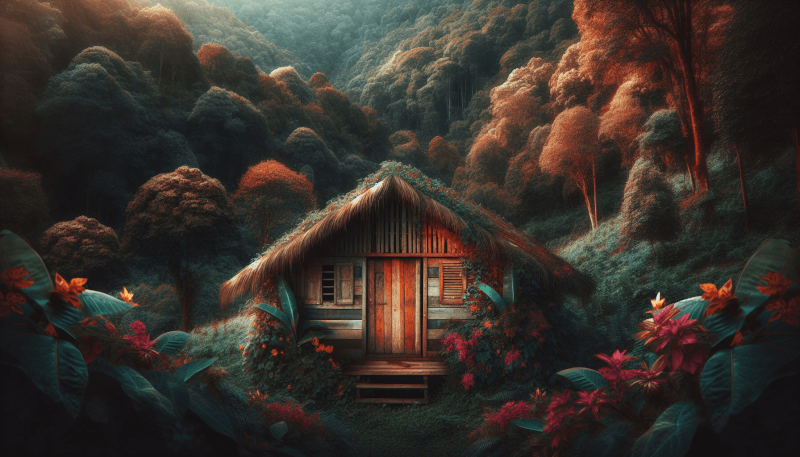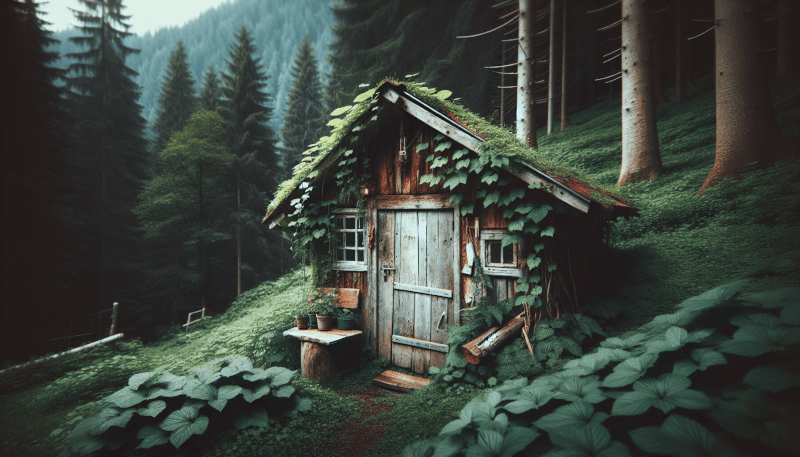Imagine a world where you can escape the hustle and bustle, leave behind the stresses of everyday life, and embrace the simplicity of nature. Picture yourself in a quaint little shack, surrounded by the soothing sounds of birds chirping and a gentle breeze rustling through the trees. These charming structures, aptly named “Shacks,” have become a popular trend for those seeking a retreat from the chaos of modern living. From cozy cabins nestled in the woods to rustic beachfront huts, Shacks offer a unique and captivating experience that brings you closer to the essence of serenity. So, let’s embark on a journey to discover the allure and enchantment of these delightful havens.
Shacks
Shacks are simple, often makeshift dwellings that have a long history and can be found in various parts of the world. These humble structures may lack the sophistication of modern homes, but they offer a unique charm and have become a popular choice for those seeking a simpler way of life. From their definition and history to the different types, advantages, and disadvantages, this article will provide a comprehensive overview of shacks.
Definition and History
A shack can be defined as a modest, often makeshift shelter that is typically constructed using basic materials and lacks the conveniences and amenities of a traditional home. Shacks have existed for centuries, often emerging in areas with limited resources or during times of economic hardship. They have served as temporary or permanent dwellings for people from diverse backgrounds, including migrants, fishermen, and shepherds, among others.
Types of Shacks
Shacks come in various forms, each tailored to the unique needs and resources of their inhabitants. One common type is the beach shack, which can be found along coastlines and offers a rustic and idyllic retreat. Another type is the mountain shack, often situated in remote locations and providing shelter for hikers and nature enthusiasts. There are also urban shacks, which can be found in cities and are primarily used by individuals facing housing challenges.

Advantages of Shacks
Despite their simplicity, shacks offer several advantages. One benefit is their affordability. Shacks can be constructed using low-cost materials, making them a viable housing option for those with limited financial resources. Additionally, the simplicity of their design and construction allows for a quicker and more accessible way to establish a shelter. Shacks also provide a closer connection to nature, with their minimalistic design often blending harmoniously with the surrounding environment.
Disadvantages of Shacks
While shacks have their advantages, they also come with certain disadvantages. One major concern is the lack of adequate insulation and protection from the elements. Due to their basic construction and materials, shacks may be prone to leaks, drafts, and other weather-related issues. Another challenge can be limited space and amenities, which may require occupants to adapt their lifestyles accordingly. Furthermore, the lack of proper sanitation facilities and access to services can pose health and safety risks.

Popular Shack Locations
Shacks can be found in various locations around the world, each offering its own unique charm and appeal. Along coastlines, beach shacks dot the sandy shores, providing a haven where visitors can unwind and enjoy the ocean breeze. In mountainous regions, hikers and adventurers seek refuge in mountain shacks nestled amidst breathtaking landscapes. Urban areas also have their share of shacks, with communities forming around these makeshift dwellings as people navigate housing affordability challenges in cities.
Building Materials for Shacks
The choice of building materials for shacks varies depending on the location and available resources. In coastal areas, beach shacks are often constructed using materials like bamboo, driftwood, and corrugated metal sheets due to their durability in humid environments. Mountain shacks, on the other hand, may utilize locally sourced timber for their construction, ensuring that they blend seamlessly with the surrounding landscape. In urban settings, shacks can be made from reclaimed materials or repurposed shipping containers.

Basic Structures and Design
The design and structure of shacks are typically simple and functional. Depending on the purpose and location, shacks can range from one-room cabins to multi-room structures. Often, their design emphasizes practicality and efficiency, making use of every available space. Open floor plans and multipurpose furniture are common features, allowing for flexibility in adapting to the needs of the occupants. Despite their modest appearance, shacks can still be aesthetically pleasing, with unique architectural elements that reflect the culture and environment of their surroundings.
Shack Maintenance
As with any type of dwelling, maintenance is crucial to ensure the longevity and functionality of a shack. Regular inspections and repairs are necessary to address any structural issues and maintain the stability of the building. Weatherproofing measures such as sealing gaps, reinforcing roofs, and applying protective coatings can help minimize weather-related damage. Proper drainage systems and waste management strategies are also essential to mitigate health and safety risks. Regular cleaning and upkeep of the interior and exterior spaces contribute to the overall maintenance of a shack.

Community and Social Impact
Shacks can have a significant impact on communities and foster a sense of belonging. In some cases, shack communities form tight-knit social networks where neighbors support and rely on each other. These communities often develop unique cultural norms and traditions, creating a vibrant tapestry of diverse backgrounds and experiences. Additionally, shacks can serve as a refuge for marginalized groups who face housing insecurity, providing them with a safe and inclusive environment. However, it is important to address the underlying issues of housing affordability and access to basic services to ensure the well-being of shack dwellers.
Shacks as Tourist Attractions
Due to their charm and distinctive character, shacks have become popular tourist attractions in many regions. Visitors are drawn to the simplicity and authenticity of these structures, offering a glimpse into a different way of life. Beach shacks, in particular, attract travelers seeking a unique coastal experience, away from the hustle and bustle of resort towns. Some mountain shacks have been converted into overnight accommodations, providing hikers with a rustic yet memorable stay amidst breathtaking natural landscapes. These tourist experiences contribute to the local economy and promote cultural exchange.
In conclusion, shacks have a rich history and diverse uses around the world. While some may view them as modest and temporary shelters, they offer several advantages such as affordability, simplicity, and a closer connection to nature. However, shacks also come with challenges, including limited space, inadequate insulation, and a lack of basic amenities. The unique charm and sense of community associated with shacks have made them popular tourist attractions, attracting visitors who seek a genuine and authentic experience. Whether found along coastlines, nestled in mountains, or scattered in urban areas, shacks continue to play a significant role in the lives of individuals and communities worldwide.



